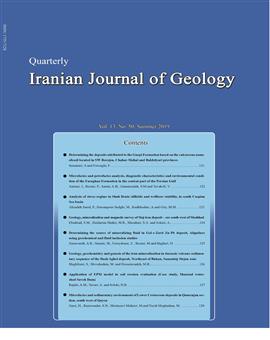Determining the deposits attributed to the Gurpi Formation based on the calcareous nannofossil located in SW Borojen, Chahar-Mahal and Bakhtiyari provinces
Subject Areas :Saeideh Senemari 1 , Fariba Foroughi 2
1 -
2 -
Keywords: Calcareous nannofossils Bio-zone Zagros Gurpi Tarbur.,
Abstract :
Calcareous nannofossils are useful in determining the relative age of the Cretaceous strata. In this study, the Gurpi Formation with a thickness of 445 m at the Kuh-e Sabz syncline located in southwest of Borojen city is investigated based on the calcareous nannofossils. As a result of this study, 20 genera and 37 species of calcareous nannofossil were identified. Based on distribution of these index calcareous nannofossils, seven bio-zones were recognized including: Calculites obscurus Zone (CC17/ late Santonian- early Campanian), Aspidolithus parcus Zone (CC18/ early Campanian), Calculites ovalis Zone (CC19/ late Early Campanian), Ceratolithoides aculeus Zone (CC20/ late Early Campanian), Quadrum sissinghii Zone (CC21/ early Late Campanian), Quadrum trifidum Zone (CC22/ late Late Campanian) and Tranolithus phacelosus Zone (CC23/ latest Campanian–early Maastrichtian), that corresponding to upper part of NC17 - NC20 and UC13-UC17. Based on the identified zones, the age of the studied intervals is Late Santonian/Early Campanian to latest Campanian/early Maastrichtian. The study of the Gurpi Formation in the Kuh-e Sabz syncline, shows that the sedimentation began at the Late Santonian/Early Campanian time and continued up to the latest Campanian/early Maastrichtian. Then, with a sudden drop in the depth of sedimentary basin, the Tarbur Formation gradually deposited on the top of the Gurpi Formation.
